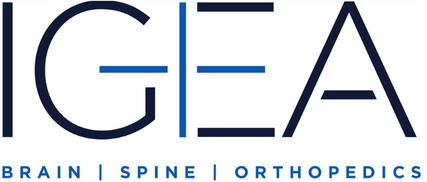DR. LIPSON SPEAKS ABOUT CALMING TREMORS
CALMING A TREMOR – FOR SOME WHO SUFFER FROM THIS PROBLEM, SURGERY OFFERS DRAMATIC RELIEF.
Even if you’ve never heard of a disease called essential tremor, you’ve seen it. Think of the late actress Katharine Hepburn. In her later years, her hands shook and her voice quavered, even when her mental faculties remained unharmed. Those are the classic symptoms of this rare and much-misunderstood condition.
Essential tremor is an involuntary shaking movement. The tremor is more likely to be noticed in the hands, though the arms, head, eyelids or other muscles—including those controlling the voice box—may also be affected. A person with essential tremor may have trouble holding or using small objects such as a spoon or a pen.
The exact cause is not known, but research suggests that the thalamus, part of the brain that controls muscle movements, does not work correctly in patients with essential tremor. The disease tends to run in families, suggesting a genetic component. (When inherited, it is known as familial tremor.) It appears most commonly in people over age 65, but it can occur at younger ages as well.
Less than 4 percent of the population is ever diagnosed with essential tremor, says Adam Lipson, M.D., a neurosurgeon affiliated with Saint Barnabas Medical Center. The condition is sometimes confused with Parkinson’s disease, but there are significant differences, he says. “Parkinson’s is a resting tremor, as with Muhammad Ali, who has low-frequency tremors at rest. Essential tremor occurs when taking an action, like picking up a coffee cup or writing something. Parkinson’s patients also exhibit rigidity, slowness of movement and dystonia—muscle spasm or cramp. And for them cognitive function is impaired, whereas essential tremor is purely a motor issue.”
That issue can be slight and manageable, or severe enough to greatly diminish quality of life. “Things like brushing teeth or picking up a fork can be affected,” he says. Treatment may not be needed unless the tremors reach that point. If they do, the first line of treatment is medication. “The standard treatment is with propranolol, a beta blocker that is also used to treat high blood pressure,” he says. But it is only effective in about 50 percent of cases. There are other drugs to try, but they too aren’t always effective, and they often have uncomfortable side effects. Drinking alcohol has been shown to help control tremors, and while doctors are loath to recommend drinking, “self-medicating is common,” Dr. Lipson says. “These are often older, retired patients who may have an afternoon cocktail.”
For patients with severe loss of function who fail to respond to medication, Dr. Lipson can perform a type of brain surgery that is both highly effective and very safe. It’s called deep brain stimulation. In it, electrodes controlled by a pacemaker-like device are placed in the thalamus to modify its function without destroying tissue.
Dr. Lipson takes a computed tomography (CT) image of the thalamus to locate the specific region that is misfiring. He then drills a nickel-sized hole into the skull while the patient is under anesthesia. He uses computer-guided imagery to thread the electrodes precisely into place. Then he wakes the patient up and begins testing. He actually calls it “an enjoyable operation.”
How can brain surgery be enjoyable? “The patient holds up a hand, and when we fire the electrode they can see the tremor go away,” he says. “Patients will say, ‘Wow! That’s amazing. That’s the first time in years I’ve had no tremor.’ It’s very rewarding.” And entirely painless, he says.
The surgical opening is then closed, and the patient spends one night in the Intensive Care Unit and then goes home. A week later, the pacemaker unit is installed under the clavicle, and a week after that, the patient works with the neurologist to program the unit’s pulse wave and frequency specifically to his or her needs.
The surgery is effective more than 90 percent of the time with a less than 0.5 percent complication rate, Dr. Lipson says. That’s a remarkable cost-benefit ratio. He has performed it on patients as young as 30 and as old as 83, so age is not a factor if the patient is otherwise healthy. Yet “only 10 to 15 percent of those who would benefit from the surgery choose this option,” he says. Many people are simply afraid of brain procedures. “I understand that,” he says. “There is still a hesitancy to refer patients for surgery when it could help them. But neurosurgery today is far safer than it was years ago.”
Dr. Lipson recommends that anyone whose life is diminished by essential tremor at least discuss this surgical option with his or her doctor. “The words I most often hear afterward,” he says, “are, ‘I wish I had known about this years ago.’”
To find out more about the treatment of essential tremor and other neurological conditions at Saint Barnabas Medical Center, please call 1.888.724.7123 or visit barnabashealth.org/sbmc.


